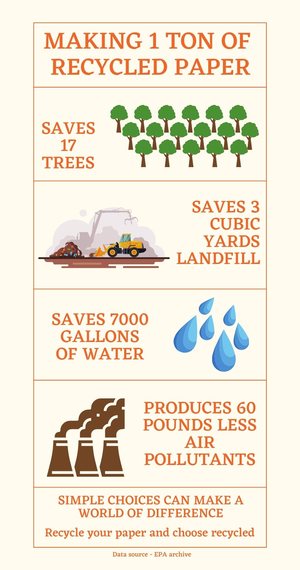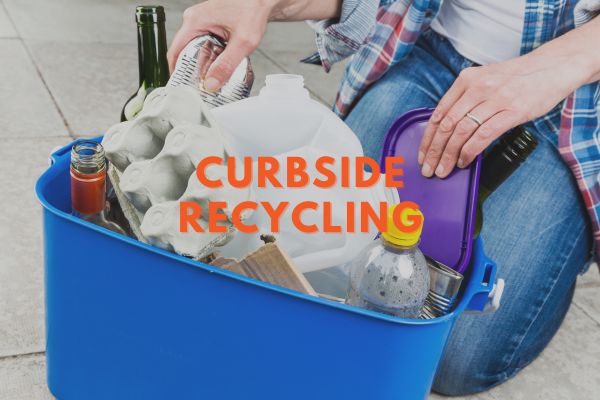Recycling is more than just a buzzword; it’s an essential practice with multifaceted benefits for our environment, economy, and society. One of the most compelling advantages of recycling lies in its capacity to conserve energy. So, how does recycling save energy? By diverting waste from landfills and reusing materials, recycling significantly reduces the energy requirements associated with resource extraction, manufacturing, and disposal processes. This article delves into the intricate relationship between recycling and energy conservation, shedding light on its pivotal role in fostering a sustainable future.
The key ways that recycling can save energy include the following:
- Reduces the need for extracting raw materials, saving energy-intensive processes like mining and minimizes energy-intensive refining processes, especially for materials like metals and plastics.
- Lowers energy consumption in manufacturing by using recycled materials instead of producing from scratch.
- Alleviates the strain on landfills by reducing the volume of waste to be managed and reducing the potential greenhouse gas emissions associated with landfills.
- Promotes a culture of resourcefulness, leading to more energy-efficient production and consumption habits.
How Does Recycling Saves Energy
1. Reduces the need for extracting and processing raw materials
First and foremost, let’s consider the energy-intensive nature of extracting raw materials. Whether it’s mining for metals or harvesting timber, the extraction of virgin resources demands substantial energy inputs.
By recycling materials like metals, paper, and plastics, we diminish the demand for new raw materials, lowering energy consumption linked with their extraction. For instance, recycling aluminum requires approximately 95% less energy than producing it from bauxite ore. This dramatic energy saving underscores the importance of recycling as a viable alternative to resource-intensive extraction processes.
Scary facts:
- Over the past half-century, humanity has consumed more natural resources than throughout all preceding history.
2. Lowers energy consumption in manufacturing
Another crucial activity where recycling can help to reduce the amount of energy is in the manufacturing phase. When materials are recycled, they often undergo processes that consume considerably less energy than producing goods from scratch.
For example, recycled paper production consumes fewer resources and emits fewer greenhouse gases compared to virgin paper production. Similarly, using recycled plastic to manufacture new products reduces the energy-intensive processes involved in refining crude oil and synthesizing virgin plastic. So, integrating recycled materials into the manufacturing supply chain inherently shrinks energy consumption, contributing to more sustainable production practices.
The positive impact of paper recycling is profound: recycling one tonne of paper conserves 13 trees and saves approximately 31,780 liters of water.

3. Alleviates the energy strain of landfills
Recycling mitigates the energy burden associated with waste disposal. Landfills, though commonly perceived as mere dumping grounds, are energy-intensive facilities that require substantial resources for waste management. Plus decomposing organic materials in landfills produce methane—a potent greenhouse gas contributing to climate change.
By diverting recyclable materials from landfills, we reduce the volume of waste requiring disposal, thereby minimizing the energy expended on waste transportation, processing, and containment. In essence, recycling alleviates the strain on landfills, mitigating associated environmental impacts while conserving valuable energy resources.
4. Promotes a culture of resourcefulness, leading to more energy-efficient production and consumption habits.
Furthermore, it’s crucial to recognize the indirect energy savings facilitated by recycling. As communities embrace recycling initiatives, they foster a culture of resourcefulness and conservation. This cultural shift transcends individual behaviors, permeating industries and influencing policymakers to adopt more sustainable practices.
Consequently, the collective efforts to recycle and conserve resources culminate in reduced energy consumption across various sectors, from manufacturing and transportation to construction and utilities. This holistic approach to energy conservation underscores the transformative potential of recycling as a catalyst for sustainable development.
In addition to energy savings, recycling brings economic and other societal benefits. The recycling industry generates jobs, stimulates innovation, and fosters economic resilience by creating a circular economy wherein materials circulate, regenerate, and re-enter the production cycle.
This circularity minimizes the need for resource-intensive extraction and production processes, thereby conserving energy and reducing associated environmental impacts. By prioritizing recycling and resource efficiency, societies can cultivate resilient economies predicated on sustainable practices, prioritizing energy conservation and environmental stewardship.
Conclusion
So to answer your question how does recycling save energy? It is a valuable activity that helps to reduce the demand for raw materials, curb energy-intensive manufacturing processes, alleviate strain on landfills, and promote a culture of conservation. Recycling is a valuable activity.
As we navigate the complexities of a rapidly evolving global landscape, embracing recycling as a viable solution to energy conservation remains imperative.
Through collaborative efforts, innovative solutions, and steadfast commitment to sustainability, we can harness the transformative power of recycling to cultivate a more resilient, resource-efficient, and energy-conscious future for generations to come.
Where can you find help on how to recycle?
There are many different recycling services available. A great way to learn more about these is to take our Curbside recycling challenge. Curbside Recycling refers to the recycling services more often provided by your local government, although sometimes only a commercial service is available. This service commonly picks up paper & cardboard, glass bottles and jars, metal cans, and certain types of rigid plastics. Take our 10-step challenge.















